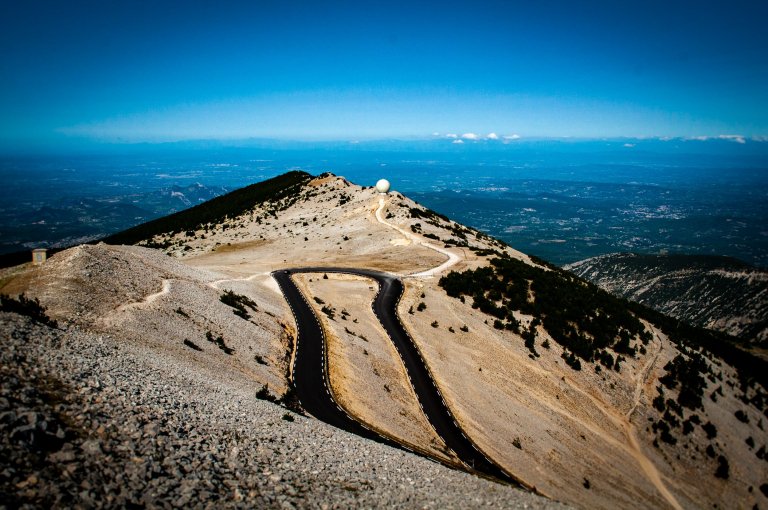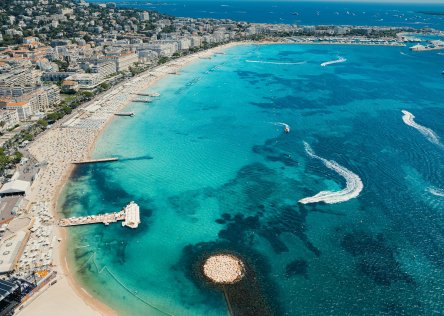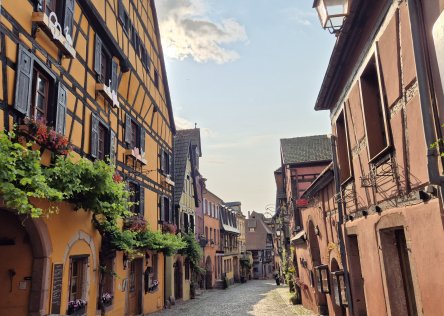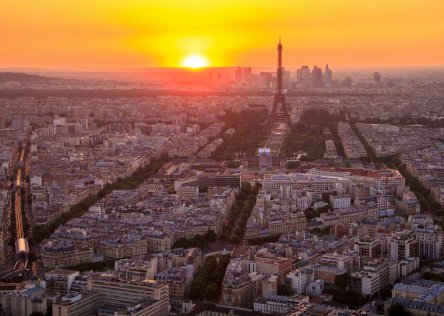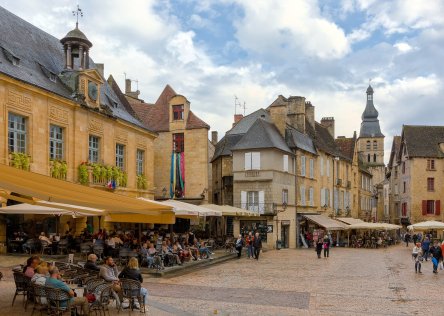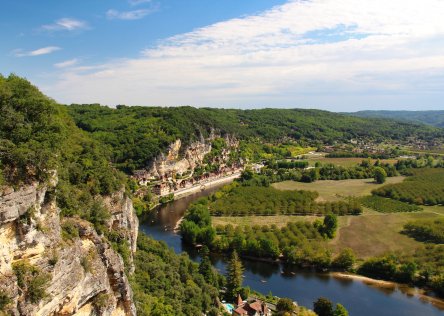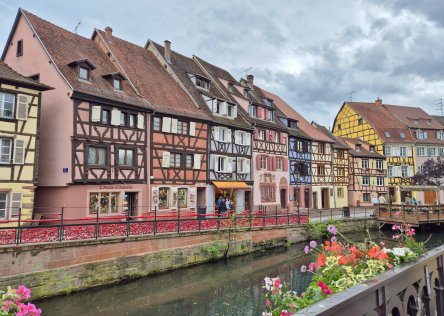Picture this: you're driving along the back roads of the beautiful Loire Valley, finally on your dream France vacation. You're passing by rolling vineyards and Renaissance château, windows down, and with the freedom to stop whenever a charming village catches your eye.
For many Americans dreaming of exploring France, the idea of a self-drive adventure sounds perfect. That is, until you start worrying about navigating French roads, understanding traffic rules, or dealing with manual transmissions (don’t worry - you can hire an automatic car here!).
If you've been hesitating about that France road trip because driving concerns are holding you back, you're not alone. These worries are completely normal. The good news is, they're all manageable with the right preparation and guidance.
On our self-drive tours of France, we take care of all the preparation for you - itinerary, routes, parking suggestions, premium accommodation, activities and car hire. So all you have to do before your trip is look forward to it!



Common Concerns About Driving in France
France offers some of the world's most scenic driving routes, from the lavender fields of Provence to the dramatic coastlines of Normandy. Unlike rigid group tours, driving gives you the freedom to explore at your own pace, discover hidden gems, and truly connect with local culture.
However, many American travelers share common concerns:
- "Do they drive on the same side of the road?"
- "Are French drivers aggressive?"
- "How will I navigate without speaking French?"
- "What about all those roundabouts?"
Here we’ll address each of these concerns and show you why driving in France is more accessible than you might think.
The Truth About Driving on French Roads
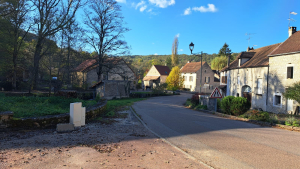
The first piece of good news is that France drives on the right side of the road, just like in the United States and Canada. You won't need to adjust to left-hand driving like you would in the UK or Australia.
French roads are generally well-maintained and clearly marked. The highway system (autoroutes) is extensive and modern, making long-distance travel straightforward. Speed limits are often posted (though not always - see the speed limits section below), and most road signs use universal symbols that are easy to understand regardless of language.
Road Types You'll Encounter
Autoroutes (Highways): These toll roads are the fastest way to cover long distances. They're well-maintained with regular rest stops, gas stations, and restaurants. Look for blue signs with white lettering and road numbers starting with "A" (like A6 or A7).
Routes Nationales: Major national roads that connect cities and regions. Generally well-maintained with good signage. These appear on white signs with black lettering and have red number markers with "N" prefix (like N7 or N10).
Routes Départementales: These smaller regional roads are perfect for scenic drives through the countryside. These often lead to those charming villages and hidden gems you're hoping to discover. You'll see them marked with yellow signs showing black "D" numbers (like D964 or D17).
If you book a self-drive tour of France with us, we will recommend the best routes to take from place to place on your itinerary.
Automatic Car Rental in France
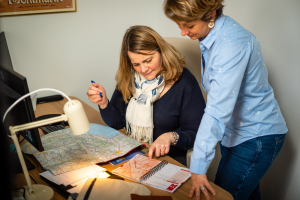
One of the biggest concerns for American travelers is finding automatic transmission vehicles in France. While manual transmissions are more common in Europe, automatic cars are readily available - you just need to book in advance and specify your preference.
If you book one of our France tour packages, we will take care of arranging automatic car hire for you - all you’ll have to do is collect the car when you arrive.
Most major international car rental companies offer automatic vehicles at French airports and city locations. The key is to:
- Reserve your automatic car well in advance
- Confirm the transmission type when booking
- Consider booking through a travel specialist like France Just For You, who can guarantee automatic transmission
When you work with an experienced tour operator like France Just For You, we handle all the car rental details for you, ensuring you get exactly what you need without the stress of navigating rental agreements in a foreign language.
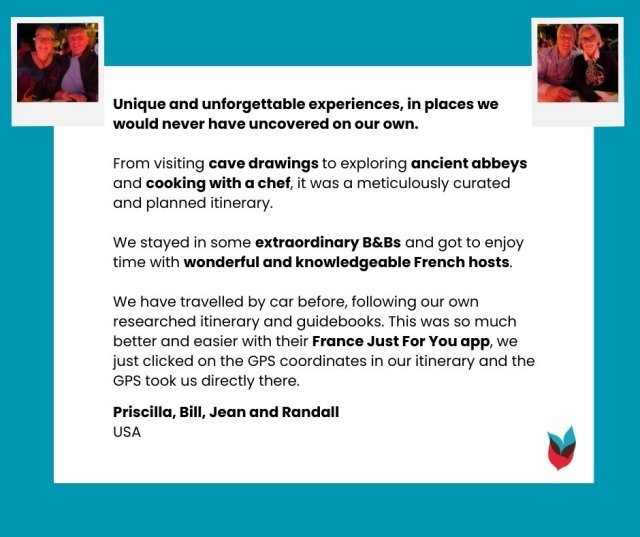
Mastering French Traffic Rules and Etiquette
French traffic rules are logical and similar to those in North America, with a few key differences worth knowing:
Priority Rules
The most important rule to remember is "priorité à droite" (priority to the right). At unmarked intersections, traffic coming from your right has priority. However, most major intersections have clear signage or traffic lights.
Roundabouts Made Simple
French roundabouts might seem intimidating, but they follow a simple rule: traffic already in the roundabout has priority. Enter when there's a safe gap, signal your exit, and you'll navigate them like a pro.
Speed Limits
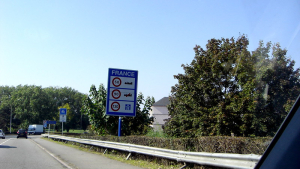
- Autoroutes: 130 km/h (81 mph) in dry conditions, 110 km/h (68 mph) in rain
- Dual carriageways: 110 km/h (68 mph), 100km/h if it’s raining
- Main roads outside built up areas/A & B roads: 80km/h, 70km/h if it’s raining, and 70km/h on the periphery road that circles Paris
- Inside towns and cities: 50 km/h (31 mph)
- Some city centers: 30 km/h (19 mph)
Pro tip: Unlike in the U.S., speed limits are not always sign-posted, so you should assume the speed limit is 50 km/h if you’re driving in a built-up area. Remember that French people tend to drive faster than drivers in the Americas.
France has many speed cameras. If you get a speeding ticket, the rental company will forward it to you at home!
Parking Tips
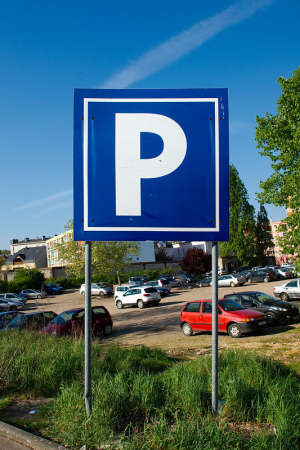
French cities often have color-coded parking zones:
- Blue zones: Paid parking during business hours
- White zones: Free parking (often with time limits)
- Yellow zones: Reserved for residents or delivery vehicles
Many towns have convenient parking areas just outside the historic center, making it easy to explore on foot. Keep in mind that parking areas in the most popular towns may fill up early in the peak season and on weekends.
GPS Navigation: Your Digital Co-Pilot
Modern GPS technology makes navigating France incredibly straightforward. Most rental cars come equipped with GPS systems, and your smartphone's map application should work well with a local data plan or offline maps.
Popular navigation apps like Google Maps, Apple Maps, or our preferred GPS app Waze, all function well in France and can provide directions in English. Download offline maps before your trip as a backup.
Pro tip: Learn a few key French road terms like "sortie" (exit), "centre-ville" (city center), and "péage" (toll) to make navigation even smoother.
RELATED: How to use Waze to guide you across France [Video]
Tolls and Gas Stations
Toll Roads (Péages)
French autoroutes use a ticket system. Take a ticket when you enter, and pay when you exit based on the distance you've traveled. Most toll machines accept credit cards, making payment simple for American travelers. However, we recommend carrying some cash just in case your card is rejected at the toll, as there often won’t be anyone available to help.
Gas Stations
French gas stations are similar to American ones, with both self-service and full-service options. Most accept international credit cards, though again, it's wise to carry some cash as a backup. Look for "essence" (gasoline) or "gazole" (diesel). Always check which type of fuel to use when you pick up the car.
What About French Drivers?
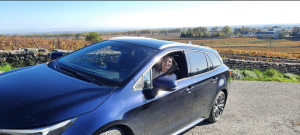
Contrary to stereotypes, French drivers are generally courteous and follow traffic rules. Like anywhere, you'll encounter the occasional impatient driver, but overall, French roads are safe and manageable.
French drivers tend to be more direct in their driving style than Americans might be used to, but this actually makes traffic flow more predictable. They signal clearly, merge efficiently, and respect traffic rules.
Regional Driving Differences
While most of France has predictable driving patterns, you may notice some regional variations. In southern France and Corsica, local drivers can be more impatient and may drive faster than in other parts of the country. This is simply part of the local driving culture and nothing to worry about.
If you find yourself on a rural road where you're not comfortable driving as fast as local traffic, and you notice a car following closely behind you, don't feel pressured to speed up. Instead, when it's safe to do so, pull over to one side of the road and allow the local driver to overtake you. This courteous gesture is well-understood and appreciated by French drivers, and it keeps everyone safe while maintaining good road etiquette.
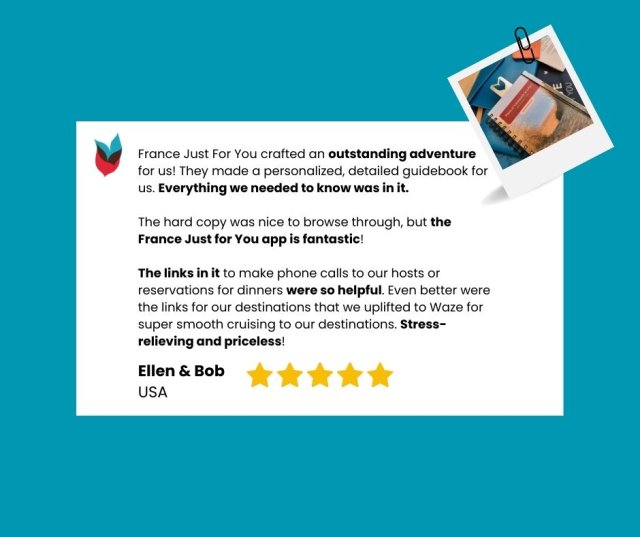
Insurance and Documentation Made Simple
When renting a car in France, you'll need:
- A valid U.S. driver's license (no International Driving Permit is required for short visits)
- A credit card in the main driver's name
- Passport for identification
France Just For You includes full insurance coverage with all car rentals. If you're traveling without us, most car rental companies include basic car insurance. For peace of mind, we recommend opting for comprehensive coverage.
Practical Tips for American Drivers in France
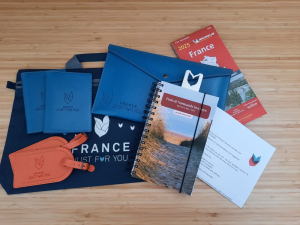
Before You Go
- Familiarize yourself with French road signs and symbols
- Download offline maps and translation apps
- Notify your credit card company that you will be traveling abroad
- Pack a phone charger for your car
On the Road
- Keep your documents easily accessible
- Maintain a safe following distance (French drivers often drive closer than Americans are used to)
- Use rest stops regularly – French autoroute rest areas are generally clean and well-equipped
- Don't hesitate to pull over if you need to check your route
In Cities
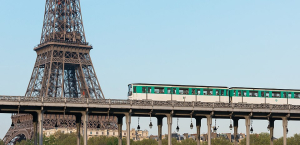
- We recommend parking outside city centers and walking or using public transportation. You may choose to visit Paris at the beginning of your trip and pick up your hire car when you’re leaving to explore the rest of France. Alternatively, visit Paris at the end of your trip and drop off your hire car when you arrive.
- Many historic city centers have narrow streets that are better to explore on foot
- Your B&B hosts and hotel staff are usually happy to provide parking recommendations
The Advantages of Self-Drive Tours

Beyond the practical aspects, driving in France offers unique advantages:
Flexibility: Stop whenever something catches your eye, whether it's a roadside market, a scenic viewpoint, or a charming café.
Authentic Experiences: Discover small villages and local restaurants that tour buses can't reach.
Personal Pace: Spend more time in places you love and move on quickly from those that don't interest you.
Cultural Immersion: Interact with locals at your French B&Bs, markets, small-town restaurants, and on private guided tours.
Why Professional Trip Planning Makes All the Difference
While driving in France is absolutely doable for Americans, having expert support makes the experience smoother and more enjoyable.
As professional France trip planners, we:
- Arrange automatic transmission vehicles with comprehensive car insurance
- Provide a detailed driving itinerary for your entire trip with parking suggestions for each destination
- Recommend scenic routes and picturesque photo stops that GPS might miss
- Are available on WhatsApp or via email if you encounter any issues or have any questions
- Pre-select premium B&Bs and boutique hotels that we have tested ourselves and where we know you will receive a warm French welcome
- Include helpful French phrases and cultural tips in your personalized travel guidebook
- Give you access to the MyFrance app, which contains your itinerary, pre-booked tickets, and links directly to your preferred GPS app
When you visit France with France Just For You, you get the flexibility of independent travel with the support of local expertise.



Making Your France Road Trip Dream a Reality
Driving in France as an American is not only possible - it's the perfect way to experience the country's incredible diversity and charm. With automatic cars readily available, excellent road infrastructure, and GPS navigation, the practical barriers are minimal.
If you're ready to experience the freedom and authenticity that comes with exploring this beautiful country at your own pace, we can help make that happen!
If you're feeling inspired but want the confidence that comes with expert planning and support, consider traveling with France Just For You.
We are experts in both French culture and American travel preferences. The right planning can transform any potential stress into pure enjoyment, letting you focus on creating memories that will last a lifetime.
Your French adventure is waiting - and yes, you absolutely can handle driving in France!

Ready to start planning your ideal France road trip?
We handle all the details - including planning your ideal itinerary, booking premium accommodation, and arranging automatic car hire - so you can focus on the adventure ahead!
Explore our customized self-drive tours designed specifically for international travelers, or contact our France specialists Emilie and Laura to discuss your dream itinerary.
Send us your France trip-planning form
FAQ
Can I drive in France with an American driver's license
Yes. Citizens of the United States, Canada, the UK, Australia, and New Zealand do not need an international driver’s license to rent a car in France. A valid driver’s license from home will be sufficient.
What do I legally need in my car to drive in France?
French law requires several items to be carried in your vehicle at all times:
Mandatory Items:
- Valid driver's license (A valid driver's license from your country, or an International Driving Permit)
- Vehicle registration documents (provided by rental company)
- Valid insurance certificate (included with rental cars)
- Reflective safety vest (one for each person in the vehicle, must be kept inside the car, not in the trunk)
- Warning triangle (must be placed 100ft behind your vehicle in case of breakdown)
Recommended Items:
- First aid kit
Good News for Rental Cars: Most major rental companies provide the mandatory safety equipment with their vehicles, so you don't need to purchase these items separately.
Which side of the road do they drive on in France?
In France, people drive on the right-hand side of the road, just like in the United States and Canada. The steering wheel is on the left side of the car, and roundabouts flow in a counterclockwise direction.
If it’s your first time driving in France, don’t worry: we’ll make sure your driving itinerary is easy to follow and includes practical tips on local road rules, signage, parking, and tolls.
And of course, we always book automatic cars for our travelers unless you request otherwise. You’ll also have access to our MyFrance app, which links directly to your GPS for step-by-step directions throughout your trip.
